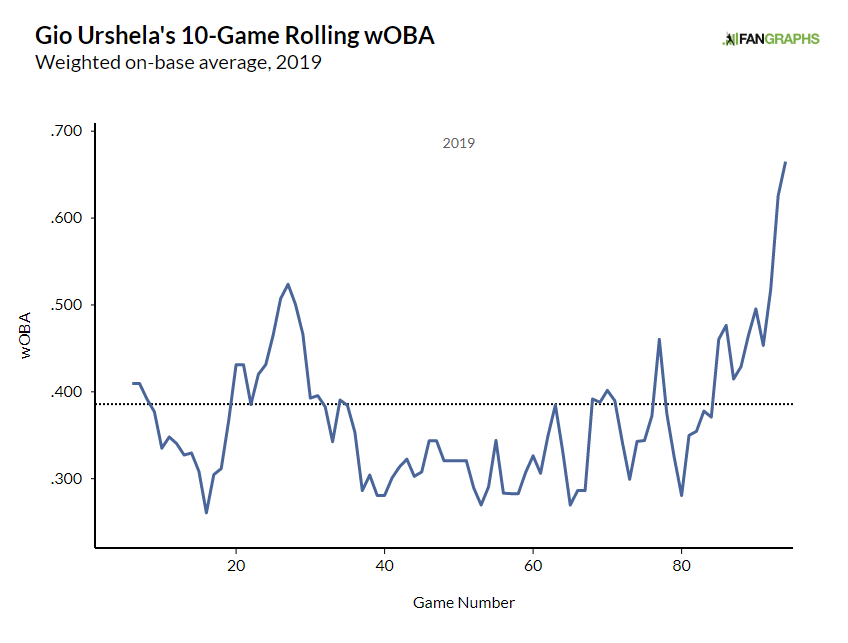There’s an easy complaint that baseball fans the world over lob at analytical, number-driven sorts like me. “Hey nerd,” it starts. “Baseball is played on the field, and your numbers can’t measure heart and smarts.” The nerd part is constant, the things the numbers can’t measure varied. That complaint misses the mark, because no one loves baseball for the numbers without also loving it for the viewing pleasure. Appreciating the statistics doesn’t have to detract from how fun it is to watch a pickle or to see a beautifully executed tag.
While that complaint is mostly off the mark, it does get one thing about statistics right. There are some things that you simply don’t need a big sample size to know. Want to know if a player is adept at hitting the ball the other way with two strikes and runners in scoring position? You’ll need a sample that could blot out the sun. Want to know if a pitcher throws 100 mph? One or two pitches will do. Not everything needs to be regressed to the mean, and not everything needs thousands of data points to be valid.
Here’s merely one example: Emmanuel Clase has thrown 38 pitches in the majors. All of them have been this week. He has one strikeout, one walk, and nine batters faced. We’re nowhere near any of these numbers stabilizing, nowhere near his strikeout rate or walk rate or BABIP being meaningful. Despite all that, I can say this with certainty: Emmanuel Clase has a chance to be one of the best relievers in baseball, and he might be the most uncomfortable at-bat in the majors already.
Why? Well, Clase is a two-pitch reliever — 80% fastballs and 20% sliders. Look at pitch classifications, and the fastball usually turns up as a four-seamer. He averages 99 mph with it and has topped out at around 102 in the minors, which is already special enough, but that’s not even the interesting part. You see, it’s not a four-seam fastball, at least not in the way you think of that pitch. It’s not a fading, rising missile that explodes through the top of the strike zone. No, Clase throws a cutter, a 100-mile-an-hour optical illusion that bores in on the bats of lefties and the very souls of righties. One cutter was all I needed to see to know that I’m going to enjoy watching Clase for as long as he pitches. Read the rest of this entry »

 Dan Szymborski
Dan Szymborski
